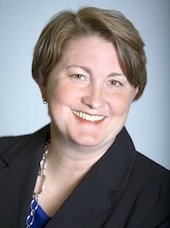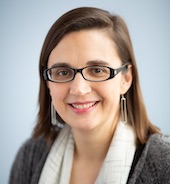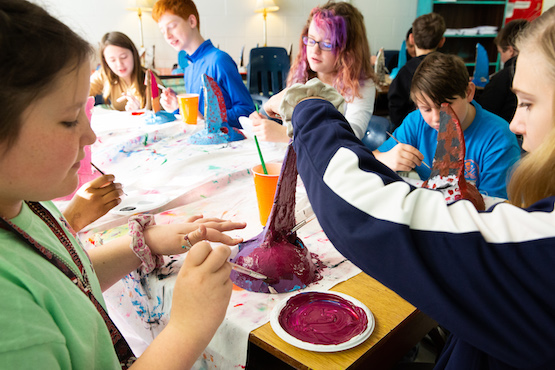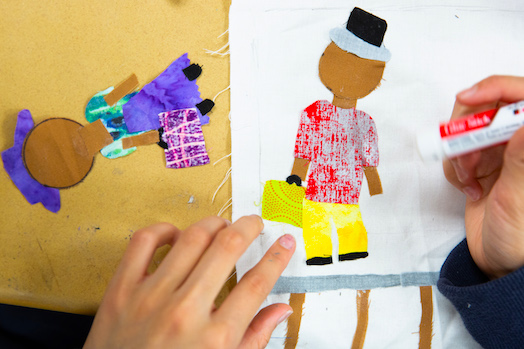Using Arts Integration to Spark Engagement
By Susan Antonelli and Dara Harrop
Eighth grade students are gathered in small groups around the room talking excitedly. “Remember,” calls out the guest instructor, an actor from a local theater company, “these need to be short and to the point. What is your main idea? You only have 8 seconds to tell your story.”
These students at Marrington Middle School in Goose Creek, SC are creating brief skits that share important science concepts from their unit on atoms. The skits will be filmed and loaded into a popular social media platform for parents and other classes to view.
Their classroom is a hub of chatter and movement as students write lines, stage the skits, and rehearse. These kids are deeply engaged in learning – and fun!
If you ask a room of 20 teachers to define engagement, you will probably get 20 different answers. Some teachers tend to believe that students are engaged if they are on-task, attentive, and compliant. However, good behavior and work completion don’t always signal learning that lasts.
It may look different from classroom to classroom and lesson to lesson, but engagement is about far more than student attention and compliance. It’s about rich thinking, rigorous challenge, creativity, and excitement about gaining new knowledge and skills.
That’s true for the arts, and it’s true for science and engineering, as the kids at Marrington Middle are learning.
Marrying the arts and sciences
Engaging Creative Minds (ECM) is a non-profit organization focused on supporting teachers at Marrington and other public middle schools in the South Carolina lowcountry as they design high-interest, rigorous learning experiences that integrate the arts into STEM, history, and other subjects.
We work collaboratively with teachers and our local ECM Instructors who represent arts and STEM backgrounds to plan highly engaging learning experiences (we call them ELEs) for the students they serve. These experiences are similar to traditional “artist-in-residence” models with a big exception; our programs are uniquely tailored to meet the particular needs of the students and teachers in school.
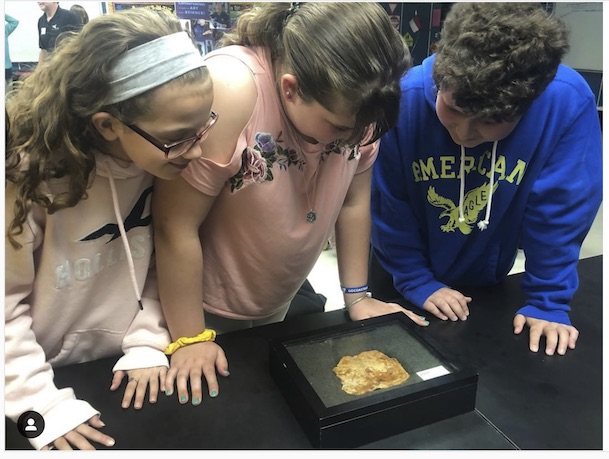
ECM Partner Frank Johnson of @HunleyProject, engaged Marrington sixth graders with items from the Civil War submarine Hunley in preparation for a visit to the Hunley Lab and Museum to explore science concepts such as energy, machines, forensics, and the evolution of technology.
When we meet with a team of teachers, the first question we ask is “Which of your standards are hard to teach or tough for students to understand? Where do they consistently get stuck?” We find that these standards are the ones that can benefit from an extra dose of engagement!
As part of our process, we ask our ECM Instructors to work closely with teachers and an ECM Curriculum Coach to design plans guaranteed to advance students academically while developing the 4 Cs of creativity, collaboration, communication, and critical thinking.
Planning together for engagement
During our planning meetings, we use these questions to guide our discussion:
What do students need to learn and understand during this learning experience? What is the specific information, skill set, or strategy that the students need to learn and apply? Sometimes this leads to a list of facts that must be memorized. But usually we arrive at bigger goals that involve higher levels of thought such as application of concepts to new challenges.
What is the learning product? Will students write a skit? Create a visual art product? Showcase a multi-media presentation? A product can do two things. First, it gives students an opportunity to “think with their body” by actually constructing a representation of their understanding. Second, it offers a non-traditional assessment product that can help teachers see where students have gaps in understanding. Check-lists and rubrics are frequently used to assign non-traditional products a numerical grade.
What is the criteria for success? How will the students know what equates to “A work?” We’ve found it’s very powerful to introduce a check-list or rubric alongside the directions for the learning product. Students are empowered to ensure that the work they complete is aligned with the teacher’s expectations.
How will we invite students to engage in the creative process? Creative thinking is one of the highest levels of thinking. It’s at the heart of what we do. We work hard to give students plenty of room for design-thinking and self-expression as part of the learning product.
How will students be challenged to think critically and engage in problem solving? Academic rigor undergirds every learning experience our teams develop. Planning for specific opportunities to engage students in critical thinking and problem solving ensures that lessons don’t stay at a low level or waste time.
How will students collaborate with others? Will they work in pairs or groups? How can you structure the experience so that there is meaningful collaboration along with individual accountability? Can a balance be achieved between group work and independent work?
How will you invite students to reflect on their own learning? Reflection is a powerful and important conclusion to any learning experience. How will students be prompted to reflect? Will they be allowed to revise their work as part of that process?
What school and teacher leaders say
The staff at Marrington Middle School believes in this process and has found it highly valuable. “Partnering with ECM’s artists and instructors has given our teachers a new way to think about content integration and engagement,” says Principal Dara Harrop. “The planning process has encouraged us to consider a variety of aspects related to engagement.”
Best of all, the professional learning is embedded. “It’s a practical model of professional development,” Harrop says, “since these experiences happen in our own classrooms.”
Last year, in Jon Reinheimer’s sixth grade class, “our students got to create puppets with a local puppeteer that represented historic figures from the Middle Ages. Next they created skits to show understanding of events such as the feudal system, the Black Death, and the signing of the Magna Carta. It was amazing to see how much more interested they were in the content when given that opportunity to be creative.”
Another ELE at Marrington provided the opportunity for 8th graders to work with textile artist Peggy Hartwell to create individual 12 x 12” quilt squares based on symbols and concepts related to Southern Reconstruction and America’s Great Migration.
“The quilt making with Peggy Hartwell was a great experience for all of my students,” teacher Kristen DelliColli, says. “Their interpretations on their quilt squares not only demonstrated their content mastery but also gave them a chance to express their thoughts and ideas creatively.”
“While showing the complicated feelings and emotions associated with Reconstruction, students were also able to convey their own feelings and emotions through their work.”
Ready to take your first step?
Finding creative ways to engage students in the learning process is a crucial ingredient for school success. We’ve touched on examples from science and history here, but the power of high-engagement learning experiences is equally accessible to language arts, mathematics, and related subjects like computer science.
Schools that can find ways to tap into the time and talents of local artists, scientists, and performers (perhaps through local guilds, arts councils and funding organizations) might begin small with an initial collaboration among teachers and volunteers from the community.
Try using our question set above as you plan your first “official” engaging learning experience. If you need some advice or inspiration moving forward, visit our website and get in touch. You can also follow us on Twitter @ECMcharleston. We love to share what we’re learning!
Susan Antonelli supports the Engaging Creative Minds coaching staff. She received a M.Ed. from The Citadel. She has also worked as an Adjunct Professor at the College of Charleston, an Art and Music Teacher for Charleston County (SC) School District, the Project Artistic Co-Director for the Arts in Education Model Development Dissemination Program, and as a Resident Teaching Artist at various schools.
Dara Harrop is Principal at the Marrington Middle School of the Arts in Goose Creek, South Carolina. Her 22-year career in public education began in Springville, Utah. She joined the Berkeley County (SC) School District in 2002. Ms. Harrop has worked as a teacher, student intervention specialist, and administrator, including four years as the assistant principal at Cane Bay Middle School.

